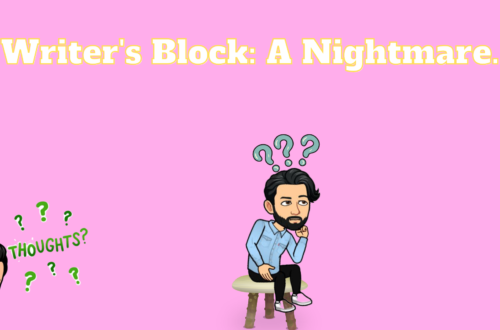
Evolution of the Music Industry in India
Music is an essential part of every Indian movie citizen’s life. Be it any genre, devotional, country, folk, classical, hip hop or rock, every Indian movie is familiar and connected with music at some level. So, how did music become a household name in India, and how did it evolve throughout the generations? To know this, we must travel through time.
Pre-Vedic era
Although there are no recorded music tunes, the presence of musical instruments dates back to the palaeolithic age. Bhimbetka rock shelters in Madhya Pradesh, a UNESCO heritage site, hold several paintings and sculptures of musical instruments such as Gongs, Lyre, and Daf. Sculptures of dancing girls, musical instruments like dhol and drum from the chalcolithic era, Indus valley civilization prove India’s origin of music as one of the oldest ones to exist.
Vedic and ancient era
Taal, related to Vedic hymns, nrityageeta and nritavaditra in Valmiki’s Ramayana, and several instruments like vina, shankha, venu, and poetry recitations in different styles of classical music are visible in ancient texts. Tholkappiyam, the most ancient Tamil text, is the earliest known work with musical references. Sangita-Ratnakara, a definitive and essential musicological text in Indian movies classical music, was composed by Sarnga Deva. Madhava Kandali, in his Saptakanda Ramayana listed several instruments such as khumuchi, tokari, tabal, vina, dosari, etc.
From the 12th Century, Indian movie music evolved into two independent forms, Hindustani and Carnatic, and competitions and concerts began under Khijlis rule. The Delhi sultanate and the Mughal government influenced Hindustani music and developed qawwali, Tarana, and khayal subgenres. At the same time, Devotional songs by Annamacharya influenced Carnatic music, keerthanas by the father of Carnatic music, Purandara Dasa, and folk music.
20th Century
Indian movie music started to fade during the British rule of India. Few households could preserve Indian movies and classical music during the colonial government. The trinity period emerged during the colonial administration from mid-18th to mid-19th Century is the golden age of Carnatic music. The trinity group was composed of three popular icons, Tyagaraja, Muthuswami Dikshitar, and Syama Sastri. Harmonium was introduced into Hindustani music, whereas violin became Carnatic music during India’s colonial era.
Later, in the early 1960s, jazz found its way into Indian movie music, and John Coltrane and George Harrison began to use sitar in their songs. The time Indian movies and classical music began to fade was the same time when new mediums of entertainment like radio, TV, etc., were emerging. The new mediums introduced pop and western music to India. Rock and roll fusions, disco, and pop also began to appear in Indian movies and music. Indian movie songs saw diverse genres from country, folk, disco, and pop to rock n roll.
Filmi music
Music from Indian films is a giant form and source of music in India, with 72% music sales. Classical music and western instruments with Indian movies melodies as a central theme began to appear widely in Indian films. In the 1970s and 1980s, pop and disco-influenced Indian movies and movie songs. In the 90s, Pop music became more famous in India.
Movies of different languages from different cultural backgrounds emerged. And folk music is diverse in India, and filmi music in India has become vast with many genres, sub-genres, and fusions. Playback singers and music composers in the Indian movie songs industry became hugely popular around the globe. There were times when the music of an Indian film was more successful than the movie itself.
In the early 1940s and 1950s, the Indian movie’s music scene was Hindustani and Carnatic. Folk music. in the 60s and 70s, artists like R. D. Burman, Bappi Lahiri, and Jatin-Lalit with composers Ilayaraaja and Raveendran introduced pop, disco, and fusions of Indian movies and Western music in Indian films.
In the 1990s and 2000s, more fusions and talented music directors like A. R. Rahman, Harris Jayaraj, Shankar-Ehsaan-loy, Vishal-Shekhar, Yuvan Shankar Raja, Nusrat Fateh AliKhan, Salim-Sulaiman, and Devi Sri Prasad emerged.
Not only music directors, playback singers, and lyricists also became hugely popular. Notable playback singers in the Indian film music industry include Lata Mangeshkar, Mohammad Rafi, Kishore Kumar, S. P. Balasubramanyam, K. S. Chithra, Udit Narayan, Alka Yagnik, Kumar Sanu, Shreya Ghoshal, Armaan Malik, Shaan, Sonu Nigam, Arijit Singh, Neha Kakkar and more. These artists sang in different languages like Tamil, Telugu, Kannada, Malayalam, Hindi, Punjabi, Bengali, and more. These artists also made their mark, singing vastly in other genres.
Western music fusions also made a massive success in the Indian movies movie industry. Songs like I am a Disco Dancer, Chamma Chamma, Jaan Pehechan Ho, and Ye Mera Dil Yaar Ka Diwana, are popular hits in the Indian movie industry. DJ music or Dance music in India, primarily based on Indian movies and movie songs, soon became popular. Dance music soon became influenced by country and folk music as well.
Patriotic music also became hugely popular in Indian movies and movie songs. Yeh Desh Hai Veer Jawaano Ka, Chhodo Kal Ki Baatein, Ae Mere Pyare Watan, Dil Diya Hai Jaan Bhi Dege, I love my India, Maa Tujhe Salaam, Phir Bhi Dil Hai Hindustani, Adho Andha Paravai, Ini Acham Acham Illai, Nenu Naa Desam, Janani Janmabhoomisicha, and more Indian movies songs from different languages became hugely popular.
Types of Indian movies Music
Classical Carnatic music, Hindustani music, Light classical music, folk music, filmi, Indi-pop, and Punjabi music are a few types of Indian movie music that have evolved through the years. Folk music of India and Indian movies songs in the folk genre is diverse and vibrant. Indian movies’ songs always carry folk imagery throughout the genres and fusions in Indian movies music.
Every region, culture, and ethnicity in India has its folk music. Bhangra, Giddha, Bihu of Assam, Dandiya, Jhumair and Domkach, Lavani, Rajasthan, Sufi Rock, and Uttarakhandi Music are a part of folk music in India. Pandavani, Rabindra Sangeet, Bhatiali, Bhavageete, Naatupura Paadalgal, Kummi Paatu, Burrakatha, Bhakha, Bhuta Song, Sana Lamok, and Ovi are other notable types of folk music in India.
Fusion of folk and classical music include sub-genres like Sugam Sangeet, Bhajan, Shabad, Qawwali, Gana Sangeet, and Haveli Sangeet. Other types of Indian movie music include dhrupad, khayal, and thumri, devotional music, ghazal, Sufi devotional music, qawwali music, qawwali songs, bauls and Bengali folk music, bhangra, and modern bhangra.




